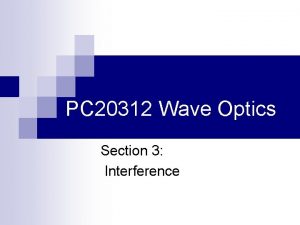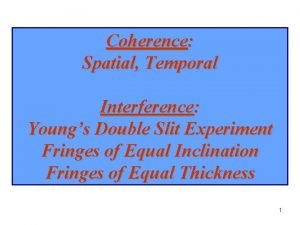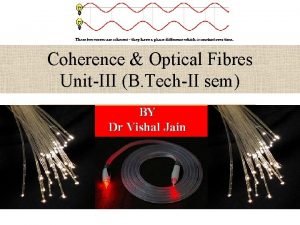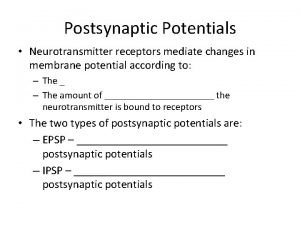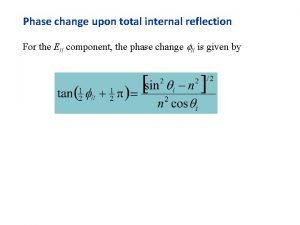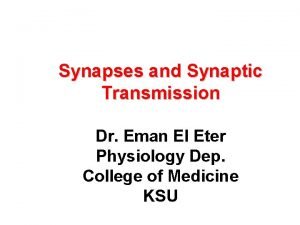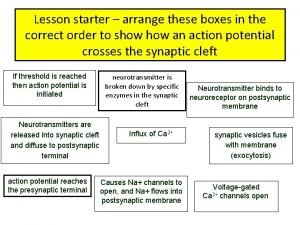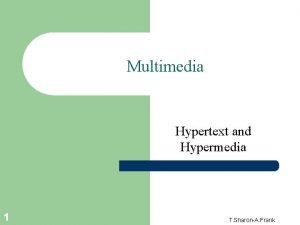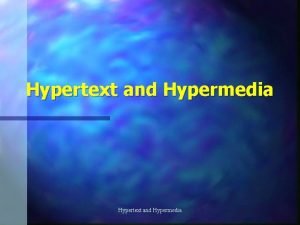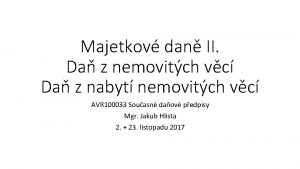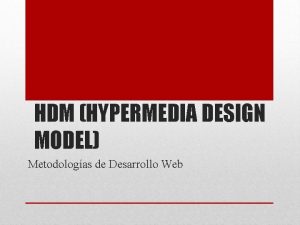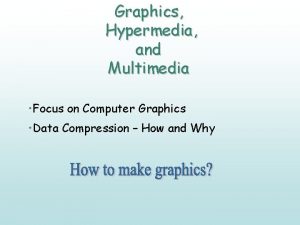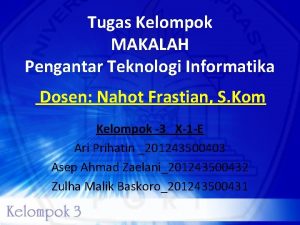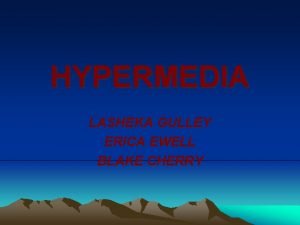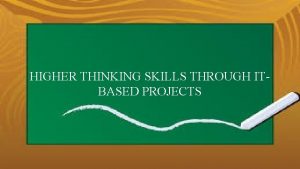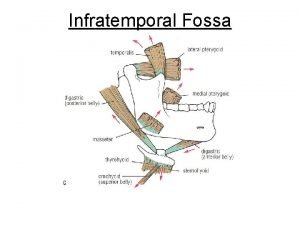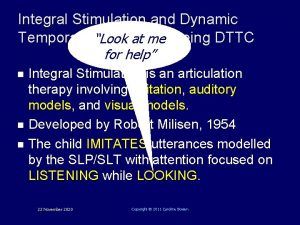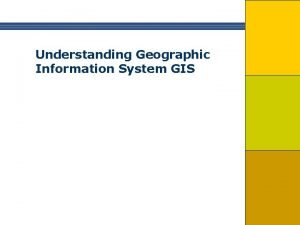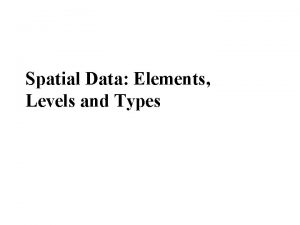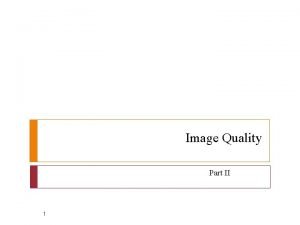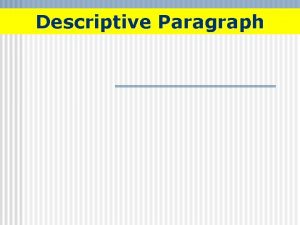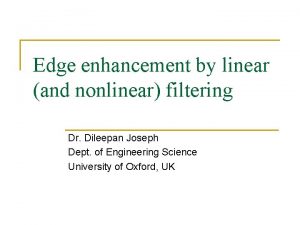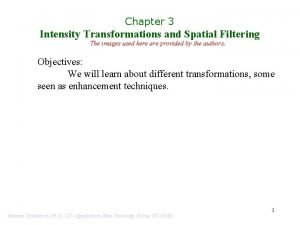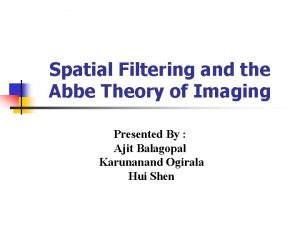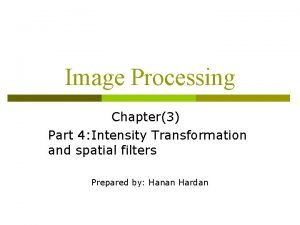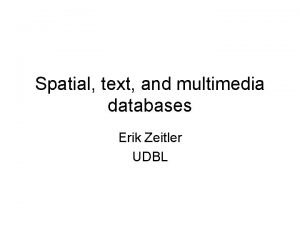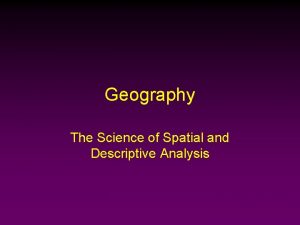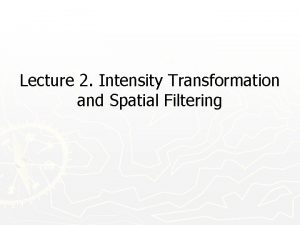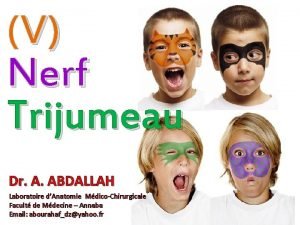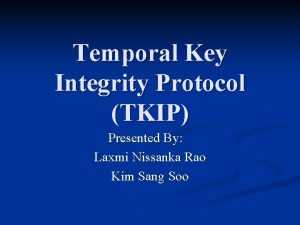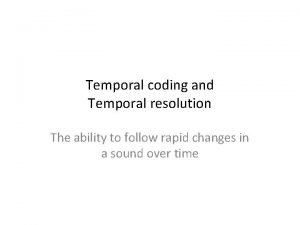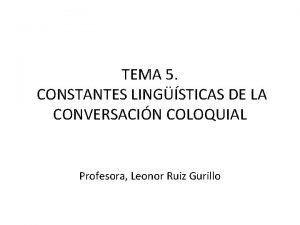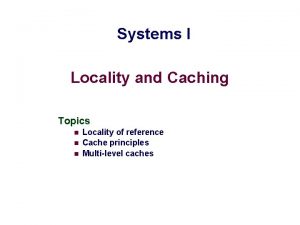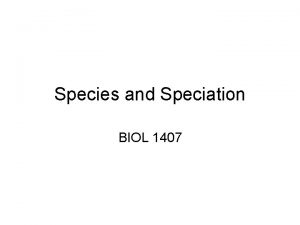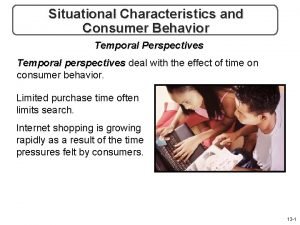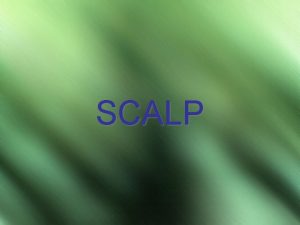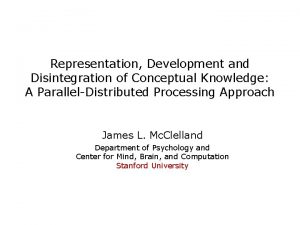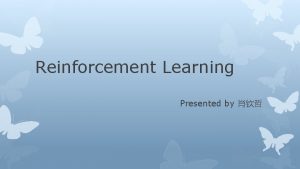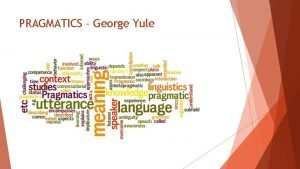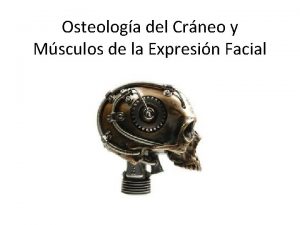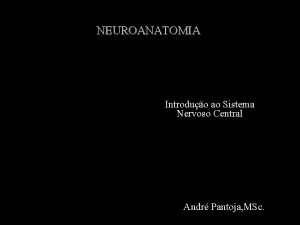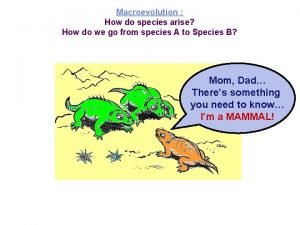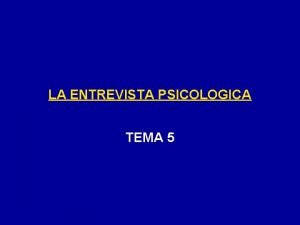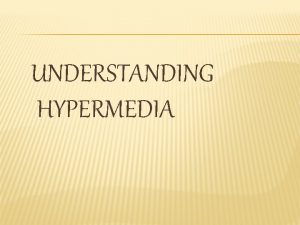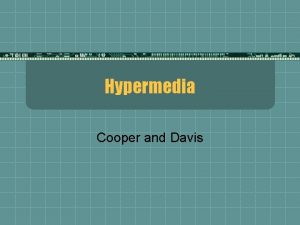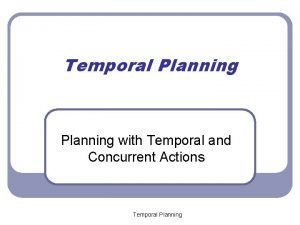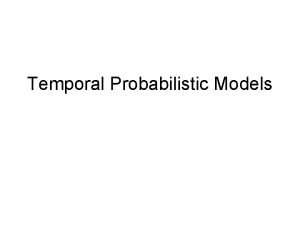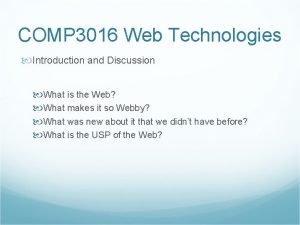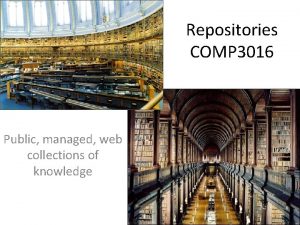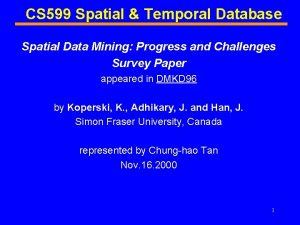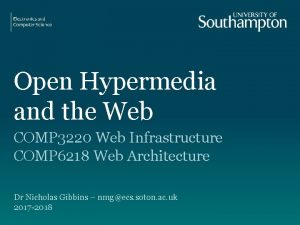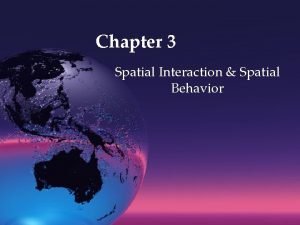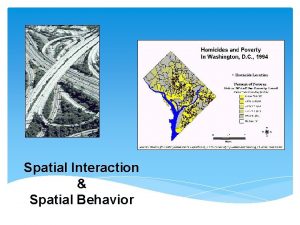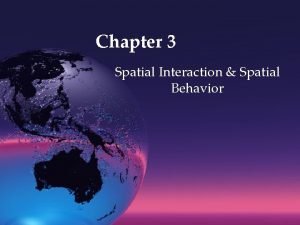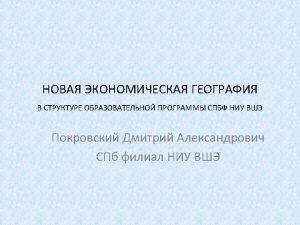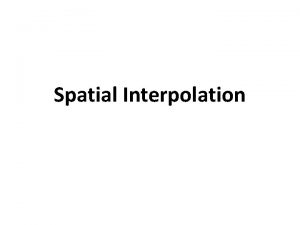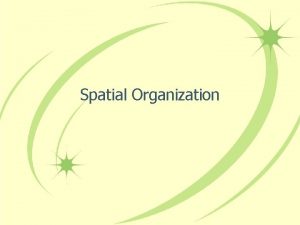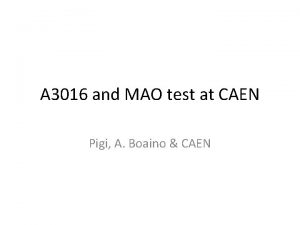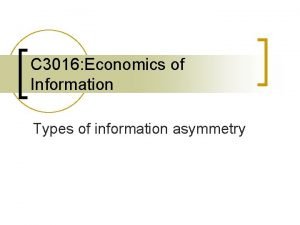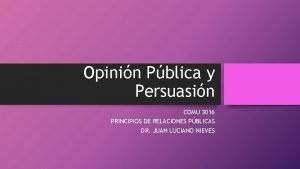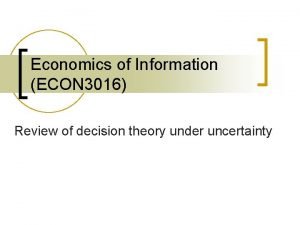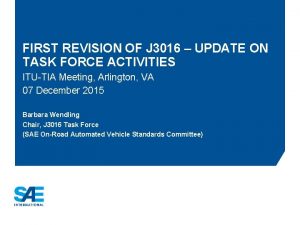COMP 3016 Spatial Temporal and Conceptual Hypermedia Dr









































![I have a dream for the Web [in which computers] become capable of analyzing I have a dream for the Web [in which computers] become capable of analyzing](https://slidetodoc.com/presentation_image_h/cd91d6eb26782889eeed04fa0cf7eb5f/image-42.jpg)











- Slides: 53

COMP 3016 Spatial, Temporal and Conceptual Hypermedia Dr Nicholas Gibbins 32/3019 nmg@ecs. soton. ac. uk

Beyond Navigation http: //www. flickr. com/photos/calsidyrose/4925267732/

Spatial Hypermedia http: //www. flickr. com/photos/auntycookie/2668980959/

What is Spatial Hypermedia? • Tools for supporting emergent structure • Tools to visualise implicit or explicit relationships

What is Spatial Hypermedia? • A visual/spatial metaphor allows people to express the nuances of structure, especially ambiguous or partial • Focus on creation of structure • Focus on spatial properties: • • Colour Border Shape Font • These tools support common understanding • Less confusing than networks • Represent implicit structure and explicit structure

Visual Knowledge Builder

Structure and Spatial Hypertext • Aggregates arranged by • • Spatial arrangement Object type Collection (user selects) Composite (defined by template)

Spatial Parsers • Produce explicit structure by interpreting the implicit structure in a space • The problem is for the parser to understand what structure is deliberate and what is not intended • Rely heavily on heuristics determined for the user

Structure Parsing in VIKI • VIKI performs a bottom-up hierarchical parse using empirically-determined heuristics • Recognition is based on three attributes of visual symbols: • position • extent • object type • The order of structure recognition is: • Aggregates based on overlaps • Sets based on homogeneity and alignment are found • Then composites are located • Found structures are re-parsed according to the same rules to find higher level structures

Recognised Structures Vertical list Stack Horizontal list Pile

Spatial Hypertext Systems • Much of the literature is based around systems that have arisen from a particular line of SHS • • • Notecards g. IBIS VNS Aquanet VIKI VKB • This work emerged almost exclusively from Xerox PARC

Storyspace (www. eastgate. com) • Storyspace is a hypertext writing tool. . • Provides a variety of maps and views to help writers create, organize, and revise dynamically.

Websquirrel (www. eastgate. com) • Spatial URL shortcut/ bookmark organizer

Tinderbox (www. eastgate. com) • A personal content management assistant • Agents that help to build structure from content

Cybergeography • See http: //www. cybergeography. org/atlas/ • Lots of research using visual tools to map • • The topology of hyperspace People’s browsing through hyperspace The social structures of hyperspace Individual web site maps • Important hypertext research in this area • Visualising hypertext link clusters by presenting nodes in 3 D space • Better search engines (identifying hubs and authorities)

Augmented Reality • Annotate live video with links and computer-generated imagery

Temporal Hypermedia http: //www. flickr. com/photos/rachelpasch/2405915548/

Time Based Hypertext • The business of inserting links into temporal and continuous media (sound, animations and video) • Links can be for • • • Providing hypertext jumps to other contexts Annotation of the current item playing Synchronization of multiple media

Issues • Embed the links or point from outside? • Standards • If embedded – what format media does this? • If linking by reference, how to describe the place the link is? • Quality of Service (will things happen when they should? )

Microcosm Sound Viewer (c. 1993)

Sound Viewer • Early innovative work on putting jump links into sound files • Top window shows clickable links and bar is the “now point” • Bottom window shows top window in context of whole file • Links can be user activated or automatically invoked (decided by author) • Link anchors described as start and finish times in seconds through file

Southampton Work on links in Video • Microcosm also supported links in Video using principally the same idea, visible links appeared as polygons within the picture, and could be authored so that they moved with an object. • Improvements in Windows component technology made it possible to develop a version of this framing the Windows Media Player. • Later work at Southampton has implemented combining streamed mm data (RTP / RTCP) with streamed metadata.

The Amsterdam Hypermedia Model c. 1994 • Concerned with provision of systems to author multimedia presentations and synchronise multiple data streams

The Amsterdam Hypermedia Model • The model had an idea of parallel “channels” • Links into temporal media could be “offset” by some time. • But clickable links were limited to stationary hotspots • This work developed into SMIL

Hy. Time • Hypermedia/Time-based Structuring Language ISO/IEC 10744: 1992 (and version 2 1997) • Added sophisticated cross document links to SGML – the predecessor to XML • The link mechanism is the basis of Xlink/ XPointer • Hub Document for linkbases • Multiple ways of doing links with sophisticated location addressing by • Name (inserted in the SGML) • Counting (including Document trees and reverse counts) (Hy. Time allowed counting in non SGML docs too) • Query (find the bit that matches this Hy. Q query)

An Opaque Hy. Time Link

MPEG-7 • MPEG-7 is a standard for describing features of multimedia content. • formally named “Multimedia Content Description Interface • describes multimedia content so users can search, browse, and retrieve that content (search engines for Multimedia) • MPEG-7 uses XML Schema for content description and is interoperable with other content description langauges (Dublin Core etc)

MPEG-7 • Descriptions are based on • catalogue (e. g. , title, creator, rights) • semantic (e. g. , the who, what, when, where information about objects and events) • structural (e. g. , the colour histogram - measurement of the amount of colour associated with an image or the timbre of an recorded instrument) • The ability to describe objects within media means that we can also link to them • We can create semantically generated dynamic links – and semantic search engines

SMIL • Synchronized Multimedia Integration Language, the W 3 C format for multimedia on the Web • XML syntax encodes: timing, screen layout, interaction, adaptivity • Uses CSS, XPointer, XLink and namespaces • Nested par (parallel) and seq (sequence) elements • Switch element, which establishes alternative means of presenting the same information (e. g. for different users or different displays) • Originally link start points were pretty simple • Latest versions look more and more like Hy. Time and include animation in XML

Conceptual Hypermedia http: //www. flickr. com/photos/binary_koala/2069692015/

Origins: Typed links • Early Hypertext systems allowed links to be “typed” • Links have some semantics, or meaning • We have some understanding of what we will get by following a link • We may be able to infer further information • If the semantics are well defined, then maybe a machine can infer information too

What is Conceptual Hypermedia? Conceptual Hypermedia = Hypermedia + Ontologies

Defining the ‘O’ word Ontology, n. 1. a. Philos. The science or study of being; that branch of metaphysics concerned with the nature or essence of being or existence. Oxford English Dictionary, 2004

Defining the ‘O’ word • An ontology is a specification of a conceptualisation • Specification: A formal description • Conceptualisation: The objects, concepts, and other entities that are assumed to exist in some area of interest and the relationships that hold among them • Referred to in the philosophical literature as Formal Ontology T. R. Gruber. A translation approach to portable ontologies. Knowledge Acquisition, 5(2): 199 -220, 1993

Ontology in Computer Science • Ontologies as engineered artifacts: • constituted by a specific vocabulary used to describe a certain reality, plus • a set of explicit assumptions regarding the intended meaning of the vocabulary • Shared understanding • Facilitate communication • Establish a joint terminology for a community of interest • Normative models… • Inter-operability: sharing and reuse

What is Ontological Hypermedia? • Hypertext is the study of what can be said using computer media, databases and links • Computer-mediated extensions to familiar textual communication • Things that exist have complex relationships with each other • Complex structures are required for expressing and exploring these relationships • Ontologies formalise these complex structures • Conceptual Hypermedia is the kind of hypertext whose structure and links are derived from the relationships between objects in the real world • Hypertext with an underlying ontological model

Conceptual Open Hypermedia • Hypermedia links can be viewed as navigable ontology relationships • Ontology used to improve linking • Concepts used to disambiguate word sense of candidate link endpoints • Links derived from ontology relations http: //cohse. semanticweb. org/

COHSE ontology server John Smith hypertext resource finder term genid: js related

Ontology-derived Links lexicon John Smith author ontology term employee-of genid: js homepage url Links for John Smith: • Homepage • Acme Inc. • Publications • 101 Widgets hypertext Acme Inc. 101 Widgets name url title url


What about the Semantic Web?
![I have a dream for the Web in which computers become capable of analyzing I have a dream for the Web [in which computers] become capable of analyzing](https://slidetodoc.com/presentation_image_h/cd91d6eb26782889eeed04fa0cf7eb5f/image-42.jpg)
I have a dream for the Web [in which computers] become capable of analyzing all the data on the Web – the content, links, and transactions between people and computers. A ‘Semantic Web’, which should make this possible, has yet to emerge, but when it does, the day-to-day mechanisms of trade, bureaucracy and our daily lives will be handled by machines talking to machines. The ‘intelligent agents’ people have touted for ages will finally materialize.

What is the Semantic Web? The Semantic Web is an extension of the current Web in which information is given a well-defined meaning, better enabling computers and people to work in cooperation. It is the idea of having data on the Web defined and linked in a way that it can be used for more effective discovery, automation, integration and reuse across various applications. The Web can reach its full potential if it becomes a place where data can be processed by automated tools as well as people. W 3 C Activity Statement

What’s Wrong with Google? • Find me some teaching materials to help 12 year olds understand basic programming concepts • How many days was it above 14 deg C in Western Australia in 2005? • Did anyone from the TOIA project also work on FREMA? • I want to go somewhere to do some windsurfing this Christmas. What’s the cheapest available way of doing this?

Principle Formats • XML - for the structured data • + RDF - for the relationships • + OWL – to represent the ontology and inference rules

Resource Description Framework 2001 -05 The Semantic Web title published. In title Scientific American date name Tim Berners-Lee creator name James Hendler creator name Ora Lassila creator

Case Study CS AKTive Space • A tool for exploring activity within the UK Computer Science Research domain • across multiple dimensions • for multiple stakeholders (from funding agencies to individual researchers. ) • Where would you get this data from? • Would it be machine processable?

CS AKTive Space Data Sources • This requires harvesting data from heterogeneous sources e. g. • • • Funding councils’ databases University sites Bibliographical Sources (inc Abstracts and e. Prints) Geographical gazetteers UK Research Assessment Exercise submissions Direct submissions by Partners • And fitting the information located to the domain ontology


CS AKTive Space Research Issues • Sustainable acquisition and harvesting • Co-reference resolution • Scalable query and inference • Visualisation of complex data • Trust and Provenance • Sustainable maintenance as social activity

Linked Data http: //www. flickr. com/photos/reedsturtevant/4288406152/

Linked Data • The Web of Data • Tim Berners-Lee outlined four principles: • Use URIs to identify things. • Use HTTP URIs so that these things can be referred to and looked up ("dereference") by people and user agents. • Provide useful information (i. e. , a structured description — metadata) about the thing when its URI is dereferenced. • Include links to other, related URIs in the exposed data to improve discovery of other related information on the Web. • e. G DBPedia

Some Issues for the Semantic Web • Linked Data starting to take off in some domains – data. gov. uk • Link and Data. We really need to be able to get semantic data from textual data -> RDFa and GRDDL. • The Semantic Gap – whose ontology? • If it did work would we be happy – or in control of the data – c. f. the Facebook API
 What is temporal and spatial coherence
What is temporal and spatial coherence What is temporal and spatial coherence
What is temporal and spatial coherence Coherence of light
Coherence of light Compression models in digital image processing
Compression models in digital image processing Neuronal pool
Neuronal pool Temporal and spatial coherence
Temporal and spatial coherence Properties of synapse
Properties of synapse Temporal summation vs spatial summation
Temporal summation vs spatial summation Spatial data vs non spatial data
Spatial data vs non spatial data Hypertext and hypermedia in multimedia
Hypertext and hypermedia in multimedia Hypermedia definition
Hypermedia definition Hypertext
Hypertext Hypermedia vs hypertext
Hypermedia vs hypertext Hypermedia insolvence
Hypermedia insolvence It for higher thinking skills and creativity
It for higher thinking skills and creativity Hypermedia design
Hypermedia design Hyper graphics in multimedia
Hyper graphics in multimedia Makalah hypermedia
Makalah hypermedia Cherry hypermedia
Cherry hypermedia Hypertext vs hypermedia
Hypertext vs hypermedia Guided hypermedia projects
Guided hypermedia projects Lateral pterygoid plate
Lateral pterygoid plate Dttc cueing hierarchy
Dttc cueing hierarchy Spatial data and attribute data
Spatial data and attribute data Spatial data and attribute data
Spatial data and attribute data Sid and spatial resolution
Sid and spatial resolution Example sentence of spatial order
Example sentence of spatial order Difference between linear and nonlinear spatial filters
Difference between linear and nonlinear spatial filters Intensity transformation and spatial filtering
Intensity transformation and spatial filtering Abbe imaging and spatial filtering experiment
Abbe imaging and spatial filtering experiment Intensity transformations and spatial filtering
Intensity transformations and spatial filtering Intensity transformations and spatial filtering
Intensity transformations and spatial filtering Intensity transformations and spatial filtering
Intensity transformations and spatial filtering Intensity transformation function
Intensity transformation function Spatial and multimedia databases
Spatial and multimedia databases Spatial and descriptive
Spatial and descriptive Intensity transformation and spatial filtering
Intensity transformation and spatial filtering Nerf temporal profond
Nerf temporal profond Temporal key integrity protocol
Temporal key integrity protocol Temporal resolution
Temporal resolution 5 ejemplos coloquiales de constantes
5 ejemplos coloquiales de constantes Locality of reference
Locality of reference Hanitat isolation
Hanitat isolation Temporal state marketing
Temporal state marketing Posterior scalp
Posterior scalp Knowledge through disintegration
Knowledge through disintegration Mnemstudio
Mnemstudio Unidad temporal en administración
Unidad temporal en administración Deictic expressions
Deictic expressions Huesos temporales
Huesos temporales Giro occipital superior
Giro occipital superior Inervacion temporal
Inervacion temporal Temporal isolation
Temporal isolation Elicitar definicion
Elicitar definicion
